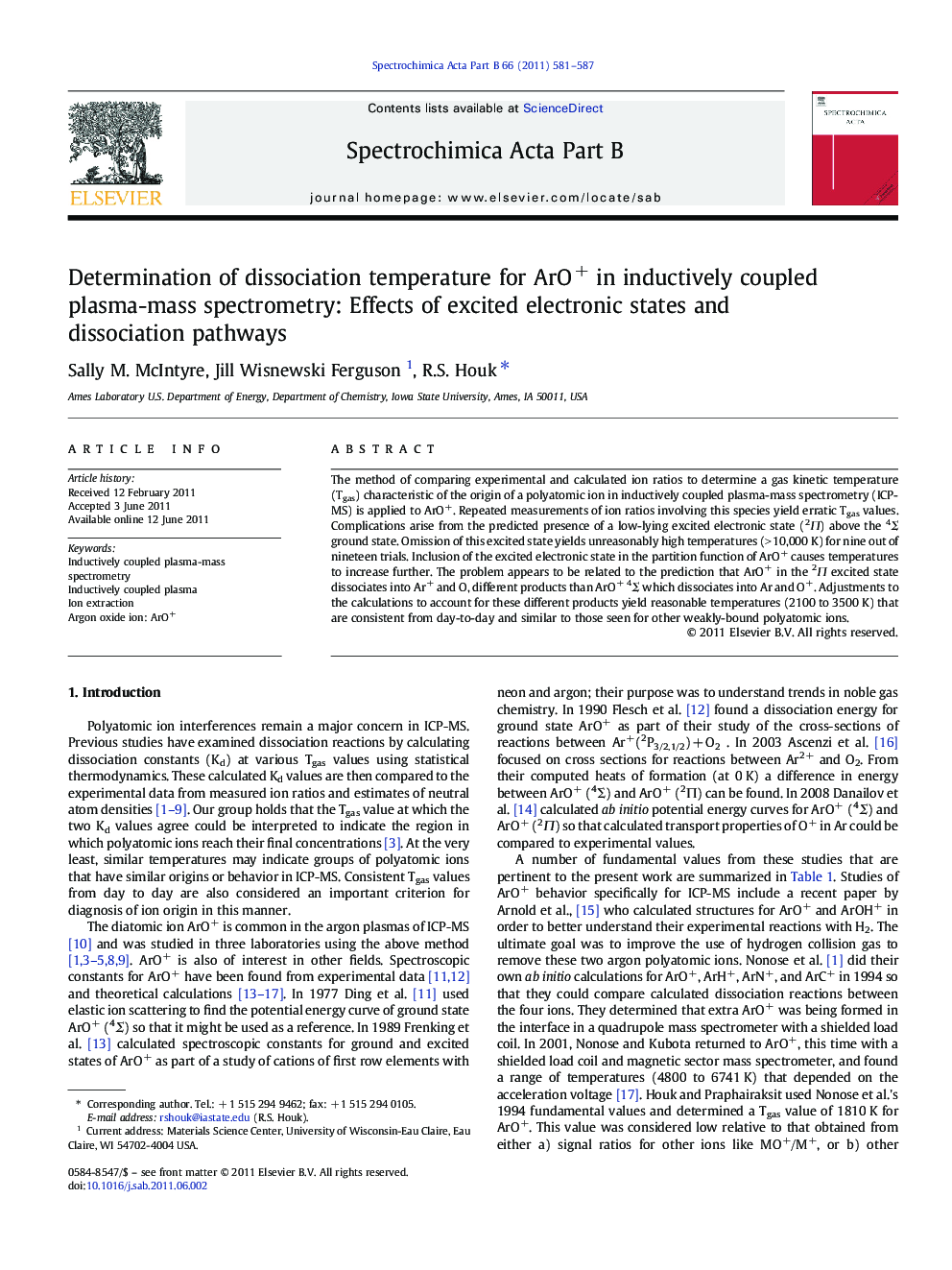| Article ID | Journal | Published Year | Pages | File Type |
|---|---|---|---|---|
| 1240197 | Spectrochimica Acta Part B: Atomic Spectroscopy | 2011 | 7 Pages |
Abstract
The method of comparing experimental and calculated ion ratios to determine a gas kinetic temperature (Tgas) characteristic of the origin of a polyatomic ion in inductively coupled plasma-mass spectrometry (ICP-MS) is applied to ArO+. Repeated measurements of ion ratios involving this species yield erratic Tgas values. Complications arise from the predicted presence of a low-lying excited electronic state (2Π) above the 4Σ ground state. Omission of this excited state yields unreasonably high temperatures (> 10,000 K) for nine out of nineteen trials. Inclusion of the excited electronic state in the partition function of ArO+ causes temperatures to increase further. The problem appears to be related to the prediction that ArO+ in the 2Πexcited state dissociates into Ar+ and O, different products than ArO+ 4Σ which dissociates into Ar and O+. Adjustments to the calculations to account for these different products yield reasonable temperatures (2100 to 3500 K) that are consistent from day-to-day and similar to those seen for other weakly-bound polyatomic ions.
Related Topics
Physical Sciences and Engineering
Chemistry
Analytical Chemistry
Authors
Sally M. McIntyre, Jill Wisnewski Ferguson, R.S. Houk,
